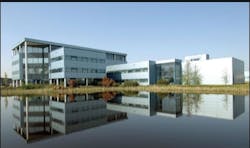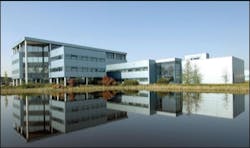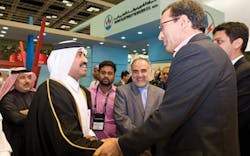Steps for Reducing Pump System Energy Costs
By Allan R. Budris
Many of the writer's past columns have touched on specific actions that can be taken to reduce pump system energy costs. However, these actions should really be part of a formal facility process which is supported and backed by management.
The specific objectives should be negotiated with senior-level decision makers for reducing pump system energy costs / life cycle costs, and/or green house gas emissions by targeted amounts. In order to obtain management's support for such a project, they must be made aware of the benefits to their facilities. An appeal should be made to management's profit motive and related savings to the plant's bottom line. The following statistics should help convince management of the savings potential:
- Drinking water and wastewater systems account for approximately 3-4 percent of total energy usage in the United States, adding 45 million tons of greenhouse gases annually.
- Water/Wastewater facilities account for up to 40% of municipal energy usage, with pumping accounting for 20-45% of this. And this energy usage is expected to increase by 20 percent in the next 15 years due to population growth and tightening drinking water regulations.
- Studies estimate that savings of 15-30 percent are readily achievable in water and wastewater plants, with substantial financial returns in the thousands of dollars (and within payback periods of only a few months to a few years). Market research indicates that pumps typically operate at less than 50% efficiency. The writer identified over $2 million/year in energy savings from pumping systems at a major NE industrial plant, with average pump projected energy savings of 40% to 50% (from the initial measured power draw readings).
The proposed formal pump system energy reduction method can be broken down into the following action steps:
DEFINE:
The first phase (step) in this process is the most difficult and critical. It must clearly define the criteria that the pumping system must accomplish (why does it exist), and explain what is negotiable and what is not. Further, the project boundaries (scope, goals, expectations & payback) must be defined. And most importantly, the support personnel and resources must be identified.
Next, the pumping systems must be screened and the systems with the greatest savings potential Identified (see Nov. 2007 column). Figure 1 provides a quick estimate of the energy cost for pumps, based on motor size and percent usage. The plot assumes an average energy cost of $.05/kW, which is probably low given today's utility rates, which probably run closer to $.10/kW. As can be seen, energy savings in the $10,000s are possible for motor sizes above about 50 hp. Energy savings can come from the pump, driver, controls, system and/or operation. Opportunities should be prioritized based on the 80/20 rule for energy savings and the associated capital investment.
It should be noted that when you assess your pumping systems for energy efficiency, you will also likely uncover other opportunities/savings during the process.
MEASURE:
Once the project has been fully defined, the specific cost reduction actions can start, with this next phase focusing on collecting the necessary detailed information on the pump system(s) which have been identified as having the greatest cost savings potential. The collected system information (data) should allow for a full energy cost analysis of all of the major pump system components. The full chain of elements that are involved in the overall energy flow in a pumping system is shown in figure 2. Each element and /or interface adds some inefficiency. The ultimate goal should be to maximize the overall efficiency, which is the product of the efficiency of each of the system energy transfer or conversion devices.
At this point it may be appropriate to bring in a pumping system specialist, and/or develop an in-house team to accomplish the project. A detailed data collection plan should be developed, and should include such items as pump factory and/or field test performance curves, system head-capacity curves (see January 2009 column), pump/system piping and elevation drawings, individual component system pressure drops (see figure 3), and driver efficiency. The minimum, average and maximum system flow rate demands should also be established. See January 2008 column for further data collection guidance. Basically the current state of the process should be measured, and this data collected and assessed for analysis.
ANALYZE:
Once all of the required measurements have been taken and the necessary data collected, it is time to analyze the results to identify gaps between the current performance, the goals (objectives), and any potential energy savings change options. The writer has found that the average system flow rate can be used for comparing the annual energy costs of the current system with the potential options. Some specific energy cost savings options that should be considered are:
- Reconditioning pumps to improve efficiency (May 2008 Column)
- Operate pumps close to their best efficiency flow rate by trimming the impeller (Dec 2007 and Oct 2009 Columns), or replacing it with a different pump size or type (Dec 2010 Column).
- Change the pump control method (Sept 2011 column), such as Installing a Variable Speed Drive (Mar 2008 Column), or Hybrid Control (Aug 2008 column).
- Increase the efficiency of the pump motor (see Nov. 2011 column).
- Replace control valves with higher CV (see figure 4) / lower pressure drop types or sizes.
- Replace a system valve with a pump operated in reverse as a turbine (see Aug 2009, Nov. 2009, Oct 2010 & Feb 2011 columns).
IMPROVE:
Once the required measurements are taken and the results analyzed, the next step is to select, design and execute the improvement(s), after obtaining the all important management approvals. This phase should also include upgrading any deficient operating processes and/or procedures.
CONTROL:
Most improvement programs do not go beyond the improvement phase, however it is important to follow up on the improvement actions to insure that the savings have been accomplished, and/or to learn from any deviations from the expected results. These "control" findings should be documented and reported to management at fixed intervals. Actions should be taken to bring the performance back to acceptable levels, if reasonable.
The final step should be to develop plans for the next most attractive pump system energy reduction candidate.
About the Author: Allan R. Budris, P.E., is an independent consulting engineer who specializes in training, failure analysis, troubleshooting, reliability, efficiency audits and litigation support on pumps and pumping systems. With offices in Washington, NJ, he can be contacted via e-mail at [email protected].
More WaterWorld Current Issue Articles
More WaterWorld Archives Issue Articles




